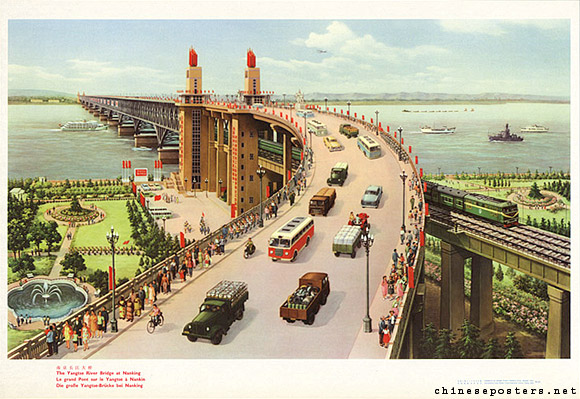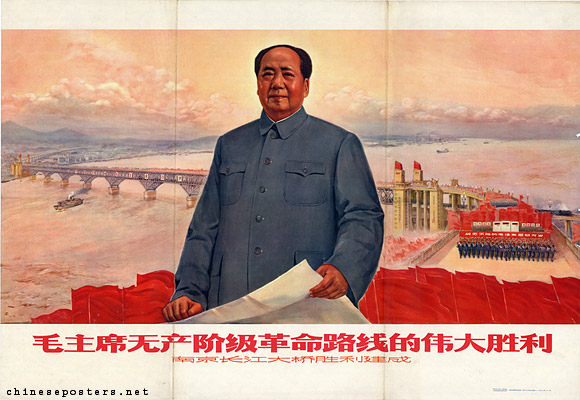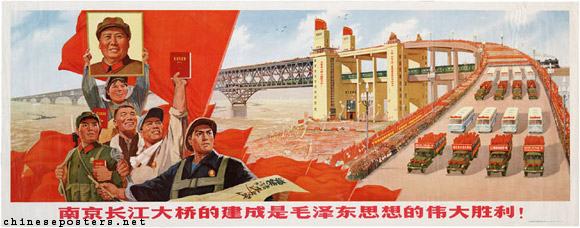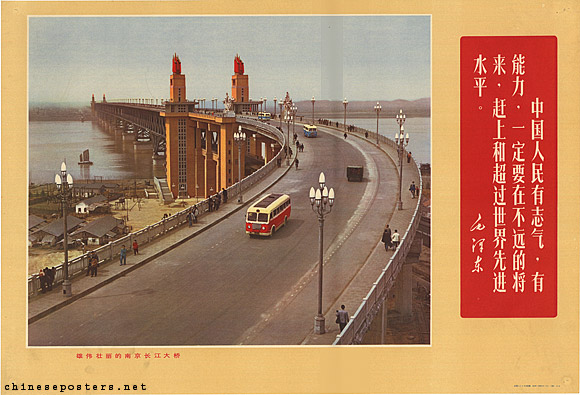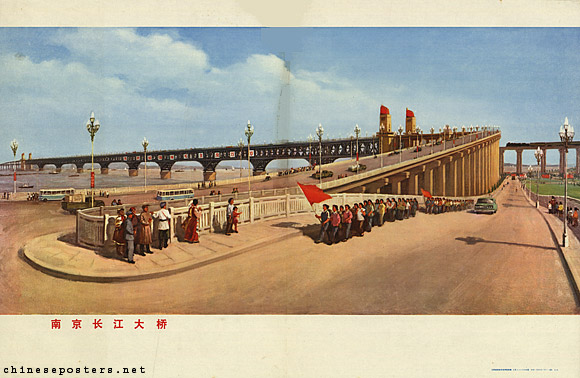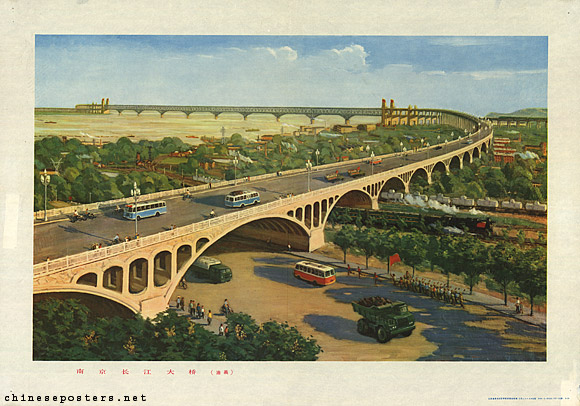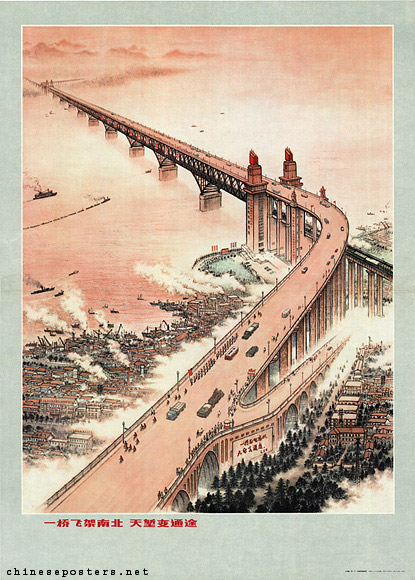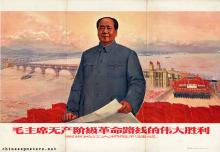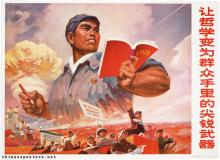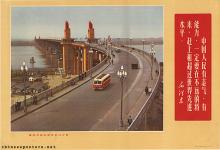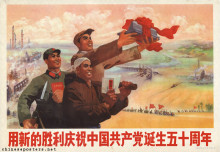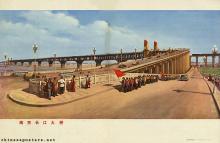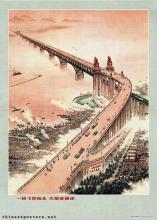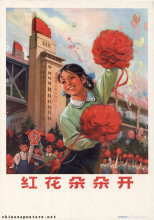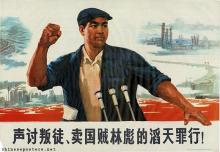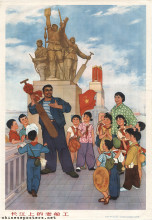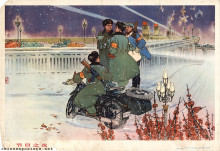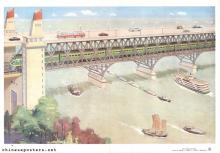The Yangtse River Bridge at Nanjing, ca. 1972
The bridge over the Yangzi river (Yangtse, Chang Jiang 长江 or ‘Long River’) at Nanjing was one of the most prestigious and most publicized constructions in China when it was opened on December 23, 1968. Construction started in 1960, with help from Soviet engineers. The bridge was modelled on the one in Wuhan, that was opened in 1957. After the Sino-Soviet split, the Russians left - taking the plans with them, alledgedly - and work halted. Then came years of economic difficulties, in the aftermath of the Great Leap Forward. During the Cultural Revolution, construction of the bridge became a showcase for China’s independence and for the ‘innate genius of the people’, as propagated by Mao. According to propaganda, ordinary workers took over from the engineers who were making all kinds of difficulties, and designed the bridge themselves, guided solely by Mao Zedong Thought.
Before the bridge was opened, all traffic on the important artery between Beijing and Shanghai had to be ferried across the river. Now, a direct road and track connection was established with a double-decker bridge.
The magnificent great bridge over the Yangzi in Nanjing, 1971
The bridge has a span of 1.5 kilometers, supported by nine massive piers. The four lane highway is on the upper deck, the twin-track railway on the lower deck. The towers on either side of the bridge are 70 metres high. One of them holds a small museum.
The big bridge over the Yangzi at Nanjing, 1971
The bridge is adorned with sculptures of groups of peasants, workers and soldiers, and stylized red flags on top of the towers. On the sides of the towers are quotations from Chairman Mao in huge red characters. One of them reads "The people - only the people - are the driving force behind world history". By night the bridge is illuminated with over 1.500 lights, making it look "like a pearl string lying on the Yangzi River".
The bridge over the Yangzi at Nanjing, 1972
Since the bridge’s opening, traffic has increased spectacularly. Two more bridges were constructed in the Nanjing area to take off some pressure. They opened in 2001 and 2005. A tunnel under the Yangzi is under construction. On the first bridge’s 40th anniversary in 2008, a ceremony was held in Nanjing to symbolize the start of the construction of a fourth bridge. This suspension bridge with a main span of over 1.400 meters, the sixth longest in the world, was finished in 2013 and looks somewhat similar to the Golden Gate Bridge in San Francisco. After long deliberations, the old Yangzi River Bridge closed for major maintenance in 2017, to be reopened late 2018. Unfortunately is has also become one of the most frequented suicide sites in the world...
Mao Yi-sheng, Bridges in China, Old and New. From the Ancient Chaochow Bridge to the Modern Nanking Bridge over the Yangtze (Beijing, Foreign Languages Press, 1978)
